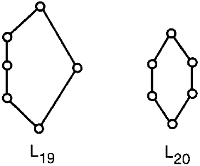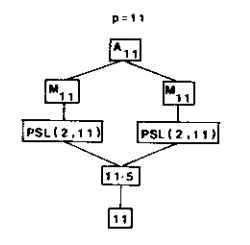The paper Lattices of Intermediate Subfactors of Y. Watatani, received on December 1994, finishes by:
Prop. 6.2. $ \ $ Any finite lattice with at most five elements can be realized as an intermediate subfactor lattice.
In fact he has investigated all the lattices with at most six elements, and they can be realized as an intermediate subfactor lattice, except the following two lattices for which he didn't know:

Question: Can any finite lattice with at most six elements be realized as an intermediate subfactor lattice?
In others words: Can $L_{19}$ and $L_{20}$ be realized as intermediate subfactor lattices?
Today is 20 years after this paper of Y. Watatani, and perhaps subfactors realizing these lattices has been found or perhaps we now know how to prove they don't exist.
Of course, if they exist we should ask the same question for seven elements, eight elements... and finally:
Can any finite lattice be realized as an intermediate subfactor lattice?
We've sketched a planar algebraic approach for this question in the optional part here, but we don't know if the skein theory is practicable or not in these cases.

